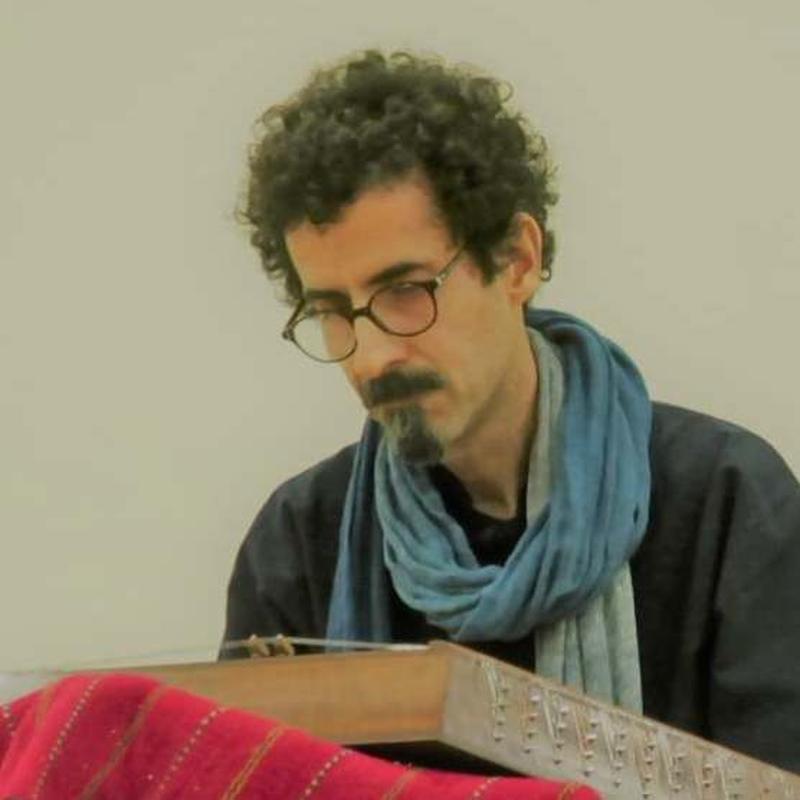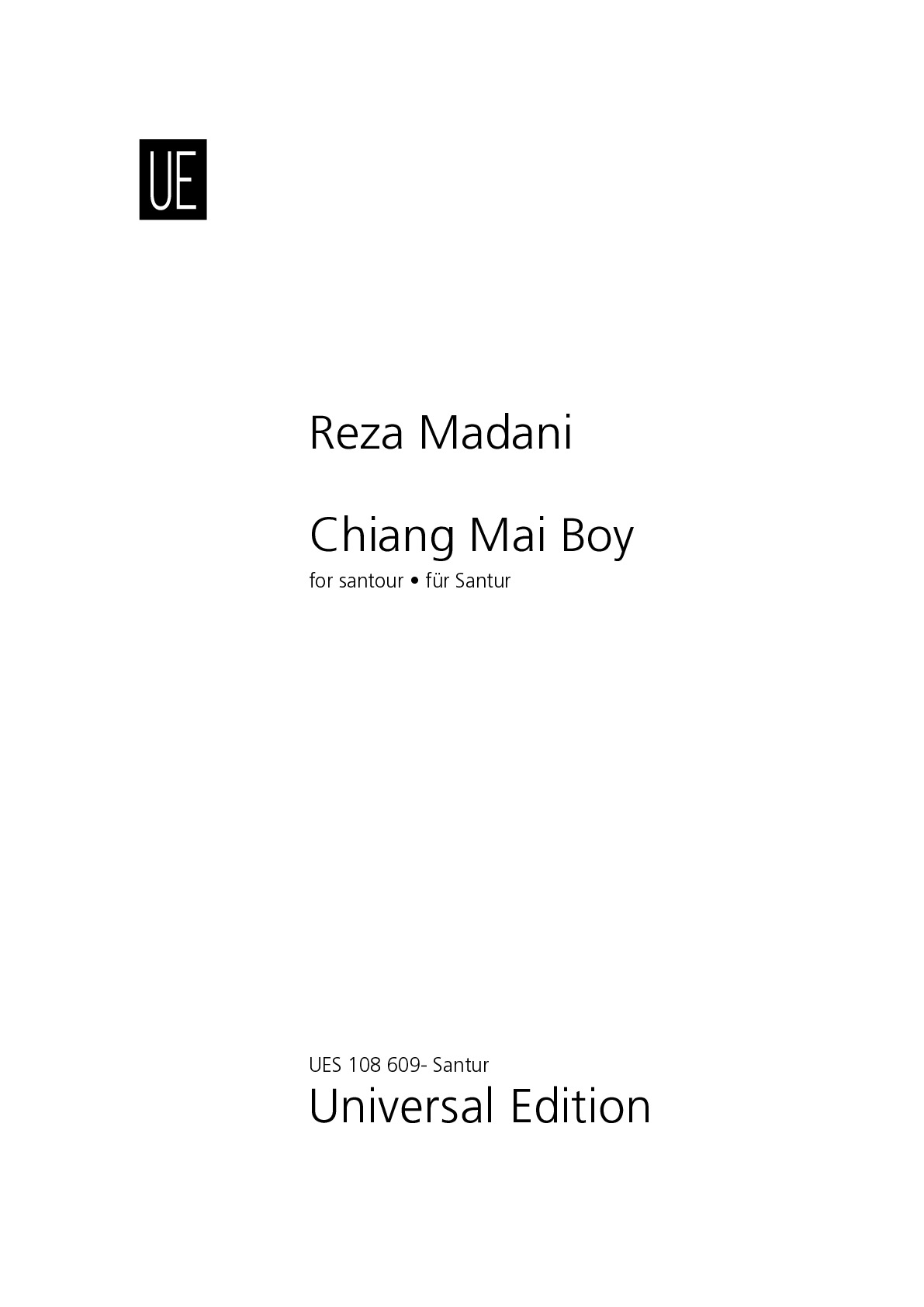

Reza Madani
Chiang Mai Boy
Duration: 2'
Solos:
santur
Chiang Mai Boy
Sample pages
Audio preview
Video
Work introduction
I was inspired by a girl dancing in the night market of the city of Chiang Mai, Thailand, to compose a piece titled Chiang Mai Girl. To complete the cycle, I composed the present piece as a “Boy” version, using tremolos to create a contrasting ambiance to the earlier work. Written in a pentatonic mode, both compositions recreate the sound atmosphere of the city.
What is necessary to perform this work?
Mode and tonality
This piece is written in G minor pentatonic scale (G - B♭ - C - D - F).
Hammer signs
In Persian, the hammers used to play the santour are called mezrabs. In the music score, hammer signs are indicated by a V for the left-hand mezrab and an n-like shape for the right-hand mezrab.
Tremolos and trills
In santour music, tremolos, called reez in Persian (literally meaning "small"), are very common. They are used both as ornamentation for short notes (indicated by double diagonals on the note's stem) and as a means to sustain long notes (indicated by triple diagonals on the note's stem). Tremolos are executed by rapidly alternating between the left and right mezrabs over the duration of the note, with the number of alternations left to the player's discretion.
Section names
Different sections of the piece are marked with the letters A, B, C, D, and E.

